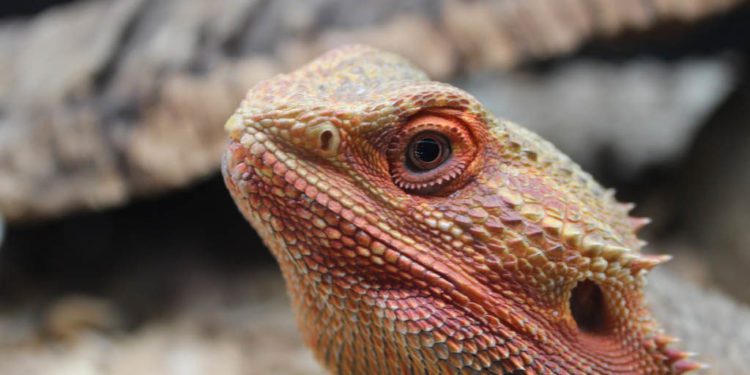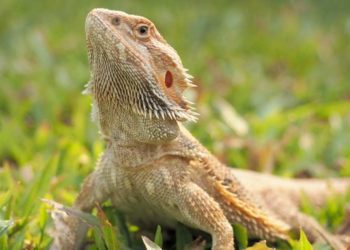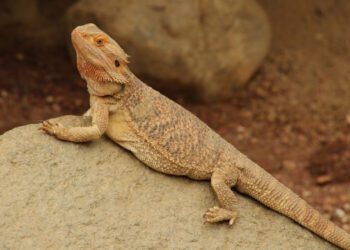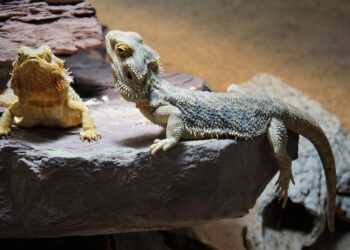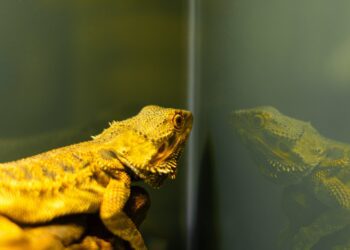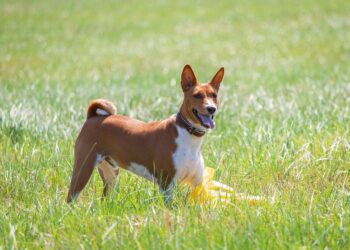Are you facing a situation in which your bearded dragon is throwing up? Well, if it is the case then it is not normal. Because if your bearded dragon is healthy it should not be vomiting. In this post, you will get to know the reasons why your bearded dragon throws up and what you can do for it.
Your bearded dragon throwing up crickets or worms or fluid might have some own reasons and you should know about it.
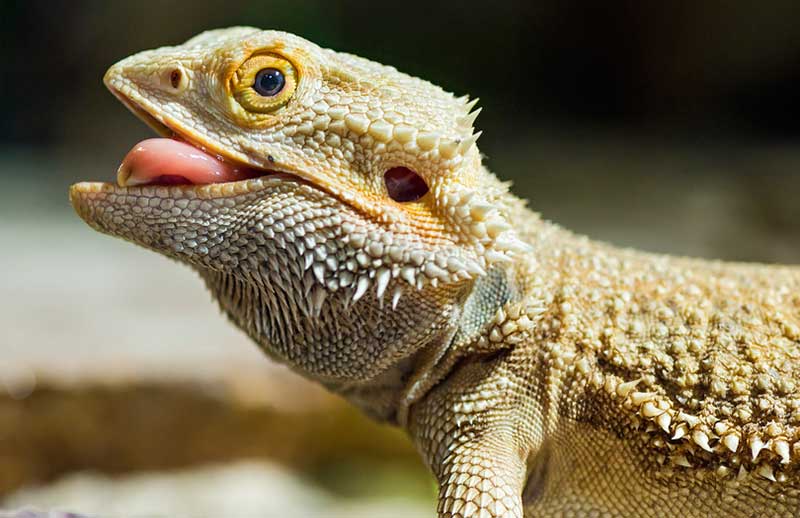
Contents
Why Did My Bearded Dragon Throw Up?
Bearded dragon throwing up can be very serious and it is important that you get a check up done by the vet as soon as possible.
Reason 1: Low temperature
One of the most common mistakes that the owners make while setting up the tank is that they do not maintain the optimal temperature inside the tank.
If the temperature inside the tank is too low then the bearded dragon won’t be able to digest the food properly and this can lead to digestive issues. Along with this, you need to make sure that there is a temperature gradient in the tank, which means that there should be hot spot as well as a cool spot so that your pet can adjust according to the requirement.
If the bearded dragon wishes to go to a cool spot or want to hide it can do so easily but for that you need to create a hideout.
The hot spot temperatures should range between 92-110 degrees Fahrenheit. The cool side of the habitat should be ranging from 75-=85 F. This can help your bearded dragon to cool down. The best way by which you can check the temperature of the tank is by using digital thermometer, place one on the hot side and the other on the cool side of the tank.
Reason 2: Humidity
The other reason can be inappropriate humidity level in the tank. Bearded dragons are mostly seen in sandy deserts and we see that they need both hot and dry conditions to survive. In case the humidity is very high your bearded dragon might experience the respiratory issues.
High humidity can also lead to fungus, bacteria growth, mold that can weaken the immune system of your bearded dragon.
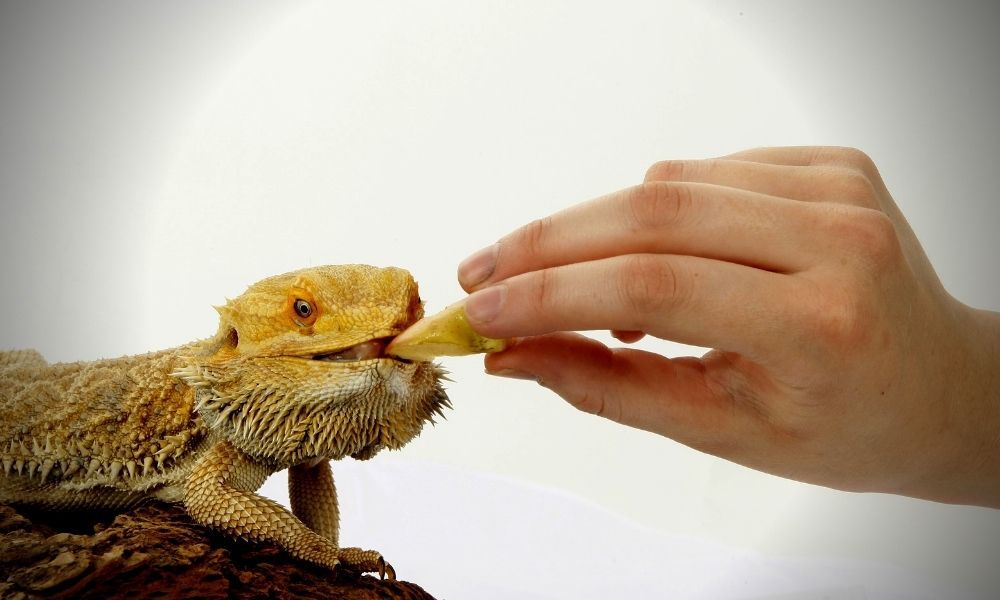
For this you can use a hygrometer in the tank and it will give to exact rating for humidity. You can even attach the hygrometer to the back wall of the vivarium and get the optimal humidity levels. If it is more than 50% then it is too high.
Learn here: How to Easily Lower or Increase Humidity in a Bearded Dragon Tank
In case you have issues with lowering the humidity levels then you can make use of the plants. They help in reducing the humidity indoors and also ensure proper airflow.
Along with this, you can even start putting water only for certain period in the tank instead of keeping it for the entire day. This is because it will help maintaining the temperature inside the habitat and prevent it from drying up. You can even make use of dehumidifier that can help in reducing the humidity of the tank.
Reason 3: Overeating
If you feed up your bearded dragon too much then it is likely to throw up. The bearded dragon is likely to throw up if you feed it a lot of food at once. Some babies are prone to eating the food more than they actually require. The adult bearded dragons that are healthy have their habits developed from when they are young. The bearded dragons that are 4 months old need to eat 2-3 times a day.
The juveniles need to eat twice in a day and the adults can eat once in a day. You need to make sure that you provide a salad bowl to your pet and make it familiar with the greens. Generally, you need to feed your bearded dragon as many insects that it can eat in the time period of 10-15 minutes.
Also, you can find that your bearded dragon is overeating and then you can reduce the feeding session. Depending upon the age of the crickets your bearded dragon can eat around 50 crickets a day.
And if you feed it less but it still looks full then maybe it is because it is not able to digest the crickets. Also, does not de crease the number of crickets till the juvenile dragon is eating a lot?
The size of the crickets is also a factor and you need to make sure when you are feeding that it is the right size. If you are feeding your bearded dragon large insects then it might even vomit these out, and it can happen with adult bearded dragons as well.
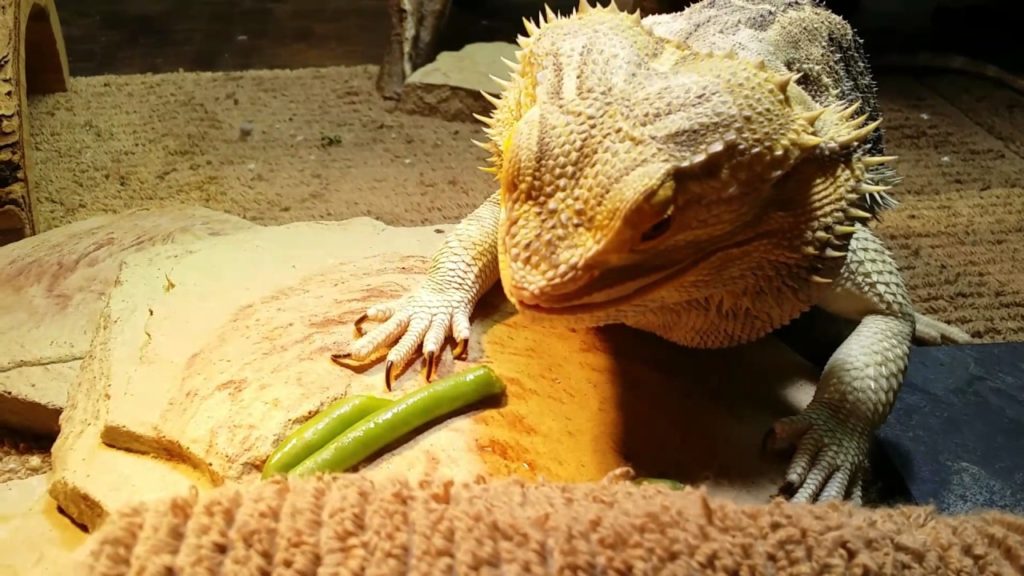
If your bearded dragon is under 7 months of age then you should not feed him the super worms and the mealworms. This is because these are large and fatty and very hard to pass through the digestive tract.
If you are having an adult bearded dragon then it can feed around 30-40 feeder insects and the silkworms are also great to be fed to them. In case you are feeding fatty treats the number should be less.
So roughly the adult bearded dragon should be given around 7-10 super worms. Babies can be given around 3-4 time insects in a day but the adult bearded dragon should have it only 2 times a week.
How Many Mealworms To Feed A Bearded Dragon?
Reason 4: Big insects
When you are feeding your bearded dragon you need to see that the size of insects and the crickets is appropriate.
This is true for the baby and juveniles bearded dragon as they are small and cannot digest big ones. If you feed your bearded dragon with insects and crickets that are too big then it won’t be able to digest these and it can even lead to paralysis.
The insects that you feed your bearded dragon should be around the space that is between the bearded dragons eyes.
You can give 1/8 to ¼ sized insects when your bearded dragon is a few months old. You can measure the space between the bearded dragon’s eyes.
REASON 5: Impaction
In case you are making use of loses substrate for your bearded dragon’s tank then it can swallow it and also become impacted. Lose substrates involve sand, small gravel, coco coir that are not good for your bearded dragon. Also, impaction might be even caused if your bearded dragon roams about in the house where small objects are present.
Another cause of impaction can even be feeding large insects your bearded dragon. You need to see that the width between the eyes and make sure that you do not feed super worms and mealworms to the bearded dragons. Bearded dragons are curious creatures and they are likely to lick and swallow the objects that they find. They can go through substrate ingestion if you do not place the food in bowls.
The baby bearded dragons those are under 6 months are also likely to ingest the substrate and this is because they are curious creatures. This is also the reason why you need to keep the babies on paper towels.
Symptoms of impaction in bearded dragons include full belly and constipation. Your bearded dragon won’t be able to pass the mass and might also have trouble pooping. The belly might look full and even round. The bearded dragon might appear lethargic and paralysed.
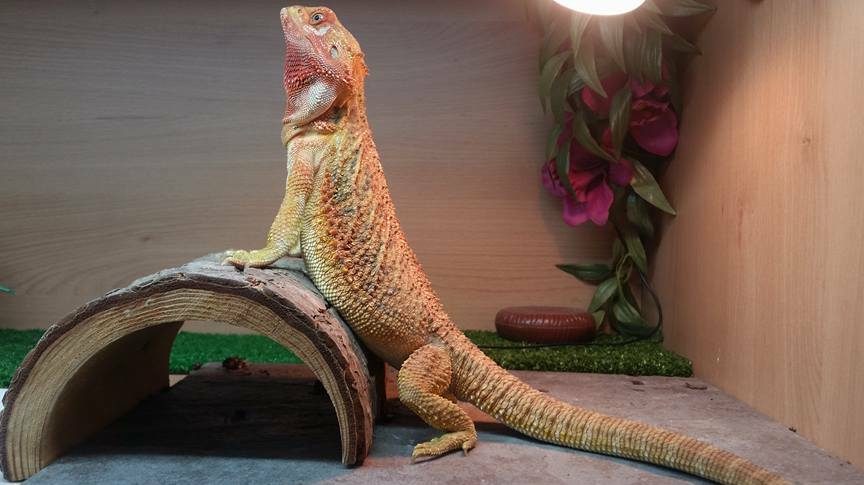
In case you suspect that your bearded dragon is suffering from impaction then you can give it a massage or slide fingers towards the vent. Massaging can be very helpful with impaction and you can even give your bearded dragon some drops of vegetable oil.
You need to check that your bearded dragon must be pooping at least once in a week and there is another fact that you must be aware of, that some bearded dragons defecate every day and some in few days. This greatly depends on the diet, but if you give them a nice bath it is very beneficial. So, in case you notice that your pet isn’t pooping once a week then there might be something wrong.
If such things mentioned above don’t help then you can take your pet to the vet and get an X-ray done. If you do not treat your bearded dragon suffering from impaction it can even die.
Reason 6: Clean cage
Another reason is that you might not clean the cage enough. The hygiene of bearded dragon is quite crucial. You need to change the water in the tank daily and if not daily, then change it when it appears to be dirty. Alsop, remove the faeces if there are any.
Moreover, you also need to clean the glass and wash the food. Clean the substrate and the food dishes. You can even use the spray to clean the tank. If you do not clean the tank regularly then there are chances of parasites developing there which is not suitable for the appetite and the overall health of the bearded dragon.
In case you suspect any parasite infection in your bearded dragon then you need to take it to a vet. Some parasites you might be able to see in the poop. So keep your bearded dragon on towels. You also need to practice sanitation and wash your hands after touching the cage. Do not eat or drink near the cage and do not wash the dragons accessories near the kitchen sink or use your personal towels.
Reason 7: Over drinking water
Some bearded dragons do not drink much water as they get a lot of it from the bath and the food they eat. But you still need to provide them with sufficient amount of water at least 2-3 times a day.
But it is noticed that after drinking water your bearded dragon might vomit. It is common for bearded dragons to show such behaviour but if they are showing disinterest then there are signs that it might be sick.
If your bearded dragon is throwing up and not eating then there are various reasons that might be affecting it. This could be due to impaction or lack of appetite. This can simply get your pet sick and often times you will even notice that your bearded dragons have suppressed appetite.
Conclusion:
So, we see that if your pet is throwing up then there can be a number of reasons for that. You need to provide your bearded dragon with the right amount of food and figure out if it is suffering from impaction because it is not safe for your pet.
Check the temperature of the cage and also see if it is eating properly or not. If you do not see some normal routines, then you need to take your bearded dragon to vet. Moreover, provide the bearded dragon with proper humidity, temperature, food and water conditions so that it stays healthy and safe. Also, provide clean tank so that it does not get infected with the parasites.


